Nearing its 20th anniversary in 2024, the Rubin Museum of Art, based in Chelsea, New York City, celebrates its globally renowned collection of Himalayan art. Inspired by both Hinduism and Buddhism as they are aligned with ongoing research that links behavior, and the brain, the Museum offers innovative exhibitions and programs. It also serves as a space for reflection, education and meditation helping visitors to cultivate their own inner worlds.
Beyond its NYC walls, Project Himalayan Art – the Rubin’s largest initiative now provides introductory resources for learning about Himalayan art with a traveling exhibition, publication, and digital platform.
“We are honored to present Project Himalayan Art to students, teachers, researchers, and anyone interested in Himalayan art and cultures, as well as those who seek to deepen their understanding of Asian art and cultures more broadly,” says Rubin Museum Executive Director Jorrit Britschgi.
“Himalayan art bridges and traverses the regional spaces defined by the somewhat arbitrary academic divisions, such as East Asia or South Asia,” said Rubin Museum curators Elena Pakhoutova and Karl Debreczeny. “It visually expresses the Buddhist, Hindu, and Bon religious cultures, as well as indigenous beliefs from the greater Himalayan mountain region, the Tibetan Plateau, and beyond, reflecting uninterrupted cross-cultural exchange,” they added.
The new digital platform, a hub for the study of Himalayan art, is accessible at rubinmuseum.org/projecthimalayanart and the introductory traveling exhibition, Gateway to Himalayan Art, has opened at its first venue, Lehigh University Art Galleries.
What happens when we die? Some people have very clear ideas about the afterlife. Others fear it and, yet others seek enlightened paths, second chances, and answers the Rubin Museum’s newest exhibit, Death is Not the End, which will remain on view through January 14, 2024, may evoke more observations and even conclusions.
Lined with fantastical beings, animals, hybrid figures, the damned, the saved, images of resurrection, and forgiveness, The Rubin has gathered a visually stunning collection of artwork, from medieval times to yesterday that explores the notions of death, rebirth, the bardo and the afterlife through the art of Tibetan Buddhism and Christianity.
Both cultures embrace the certainty of mortality in this world and both propose an existence beyond this lifetime; likewise, they advance the acceptance of death tied to the idea of an afterlife that depends on how virtuously one has lived on earth.
This cross-cultural exhibition brings together 58 objects spanning 12 centuries from the Rubin Museum’s collection alongside artworks on loan from private collections and major institutions.
“During a time of great global crises and uncertainty, loss, and turmoil, many question and ponder the various ideas related to the afterlife,” said Elena Pakhoutova, Senior Curator of Himalayan Art. It was the finite nature of life that propelled this exhibit, offered a spokesperson.
Coincidentally, a glut of pop-culture depictions of the afterlife – often categorized as “dark comedies” — have been crowding TV screens for the past three years indicating an almost obsessive preoccupation with death and more: After Life, This Is Us, The Sinner, The Good Place, The Walking Dead, Kidding, Upload, Six Feet Under, Dead Like Me, Sorry for Your Loss, Pushing Daisies, Go On, Time of Death, Miracle Workers, Russian Dolls, and Black Mirror, to name a dozen or so.
When asked about this phenomenon, Dr. Greg Garrett, a professor of English at Baylor University, said to The Cut, “They [the TV shows] are a way of helping us cope with some of the stresses and difficulties that we might be experiencing in the present moment. We’re living in a time of really high tension — for some people, it feels like we’re living in hell.”
To that end, the Rubin has paired artworks from Christianity— perhaps the most familiar cultural framework in the United States—with those from Tibetan Buddhism, a less known visual culture in the West, to highlight a universal commonality.
“I hope this exhibition inspires conversations around the sometimes challenging or uncomfortable topic of what comes after life, as well as respect for different perspectives and approaches,” said Pakhoutova.
The exhibit is bookended by two interactive displays. Just as Zen gardens, Tibetan sand mandalas, dunes and sandcastles, all evoke impermanence, the first installation on the sixth floor gallery invites visitors to contemplate the impermanent nature of life by creating an ephemeral sand formation on the sand table.
Visitors can write in the sand to name or commemorate a person, a feeling, a memory, a wish, a habit, a time or experience. Using the small rake, make that image dissolve to show that what was created inevitably dissolves or passes.
Among the works juxtaposed alongside each other are those that emphasize brimstone, the damned experiencing the tortures of hell as well as more visually pleasing and optimistic imagery of divine intervention, redemption, joy, and rebirth.
The transience of earthly life, which is subject to death and decay is told clearly in A Woman Divided into Two Representing Life and Death (18th century), an allegorical vision of the human condition as if it is a moral checklist on vanity, pride – looks, clothing and even good health – while calling on the viewer to live a less selfish life.
The Last Judgment by a follower of Hieronymus Bosch (late 16th century) vividly portrays the horrors of hell to persuade Christians to renounce immoral living in anticipation of the Last Judgment and salvation.
Likewise, the notion of “divine intervention,” is illustrated in examples from both cultures: A Buddhist album leaf painting illustrates Beings Liberated from Hell by the Blessings of the Buddha (18th–19th century) depicts an instance of “divine intervention” by Buddha Vairochana; and the Christian version is seen in Pieter van der Heyden’s engraving of The Descent of Christ into Limbo, after Pieter Bruegel the Elder (1561) shows Christ appearing in a sphere of radiance, guiding souls that are crowding out of the hellish mouth of limbo and led to heaven.
This exhibit is likely to stay with viewers for a good long time. Be it the man in the left hand corner of the engraving, The Inferno, being forced to drink molten coins as a punishment for his sin of greed or, the concentric circles of rainbow light above turbulent waters with cleansing powers to remove all obstacles for a better rebirth in the Sarvavid Album Leaf: Palaces of Light, viewers may find themselves wrestling with questions about their own iterations of eternity, heaven, hell, virtue, ethics, communion and their journeys.
To that end, at the final display, visitors are asked to share their own ideas based on four prompts: What is rebirth to you? Tell us how death might not be the end; Describe your perfect afterlife; and How does believing – or not believing – in the afterlife impact how you live? The anonymous responses are on display to share with other visitors. Hours: Thursday 11:00 am-5:00 pm; Friday 11:00 am-10:00 pm; Saturday and Sunday 11:00 am-5:00 pm
Admission Fees: $14-$19
https://rubinmuseum.org/
By Maria Lisella. Maria was twice nominated for a Pushcart Poetry Prize, Maria Lisella’s collections include Thieves in the Family (NYQ Books), and two chapbooks, Amore on Hope Street (Finishing Line Press), and Two Naked Feet (Poets Wear Prada). Maria Lisella also holds the honor of the sixth Queens Poet Laureate.

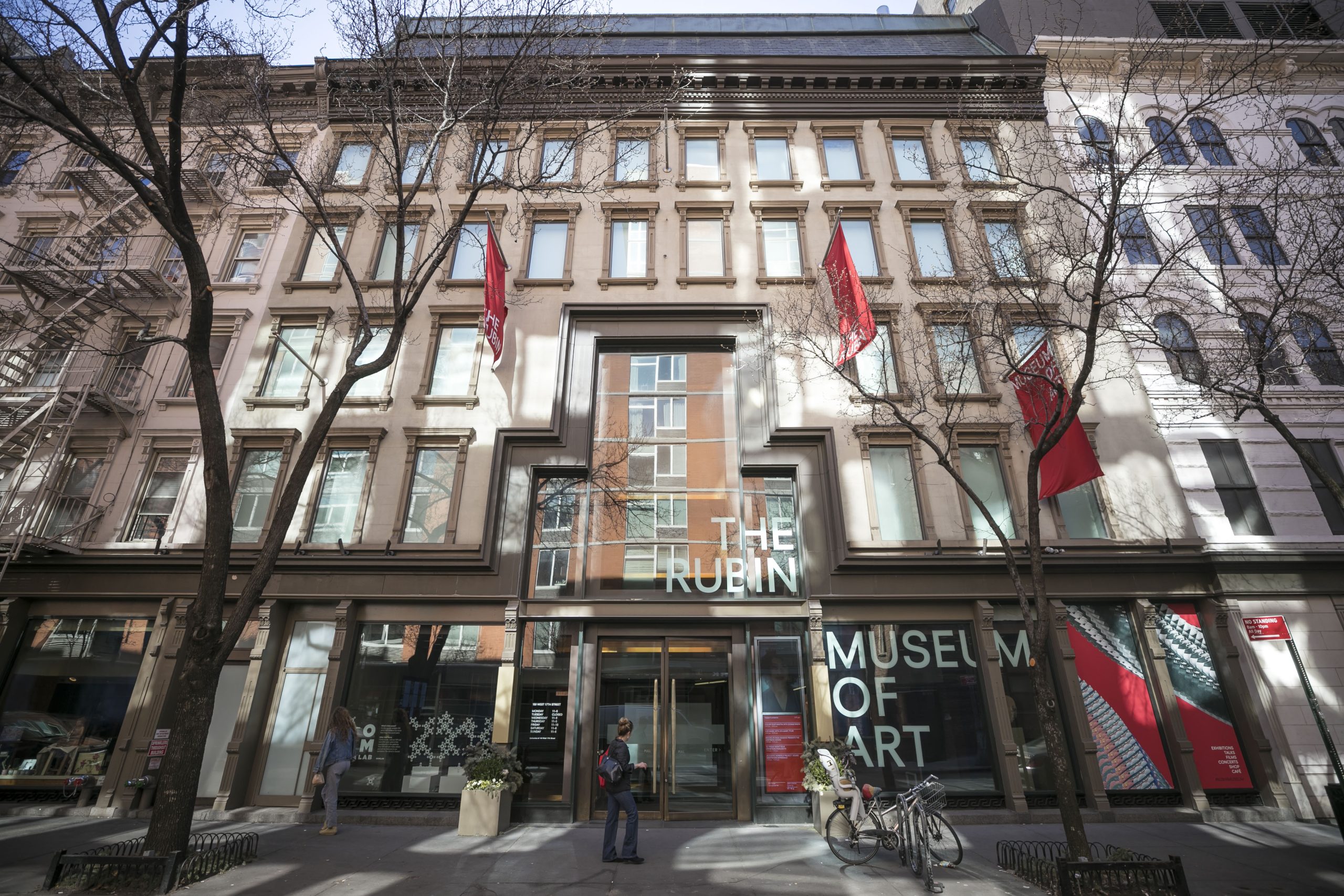
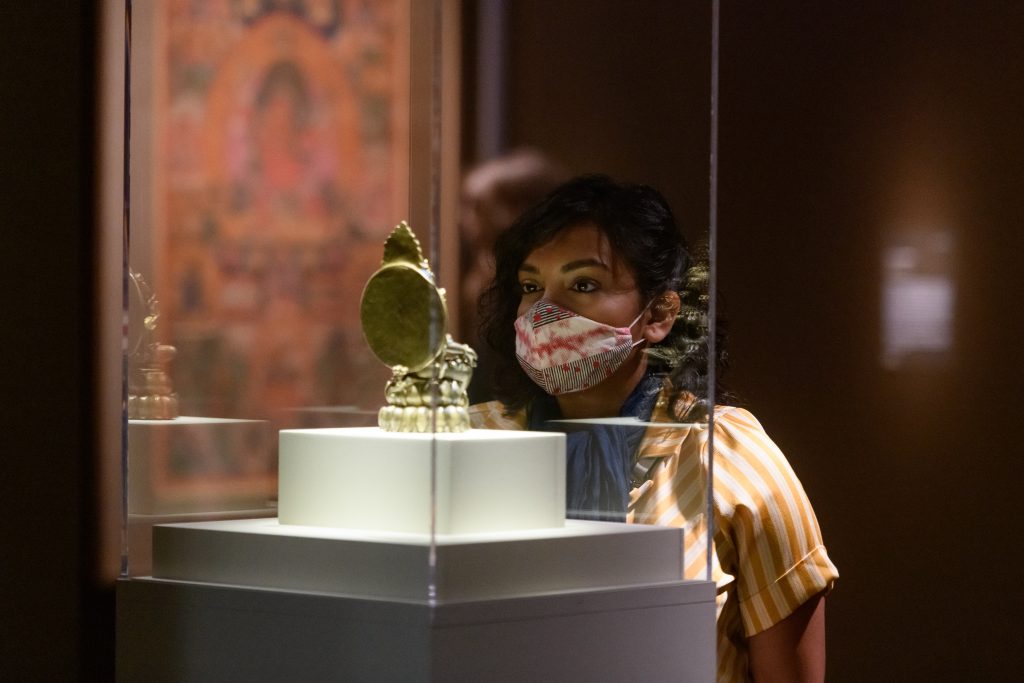

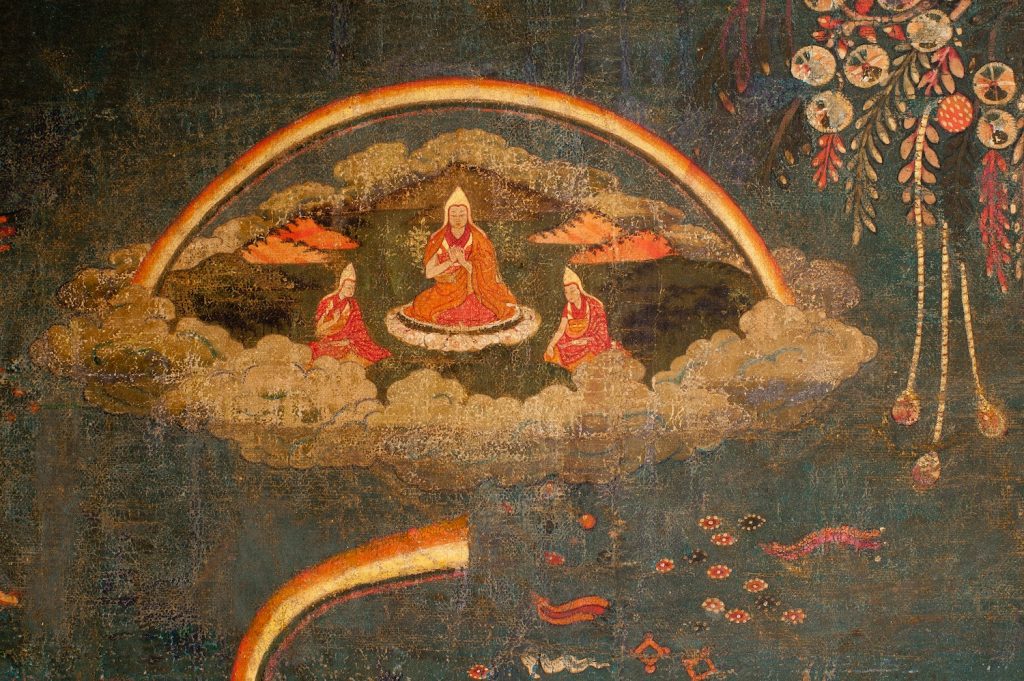
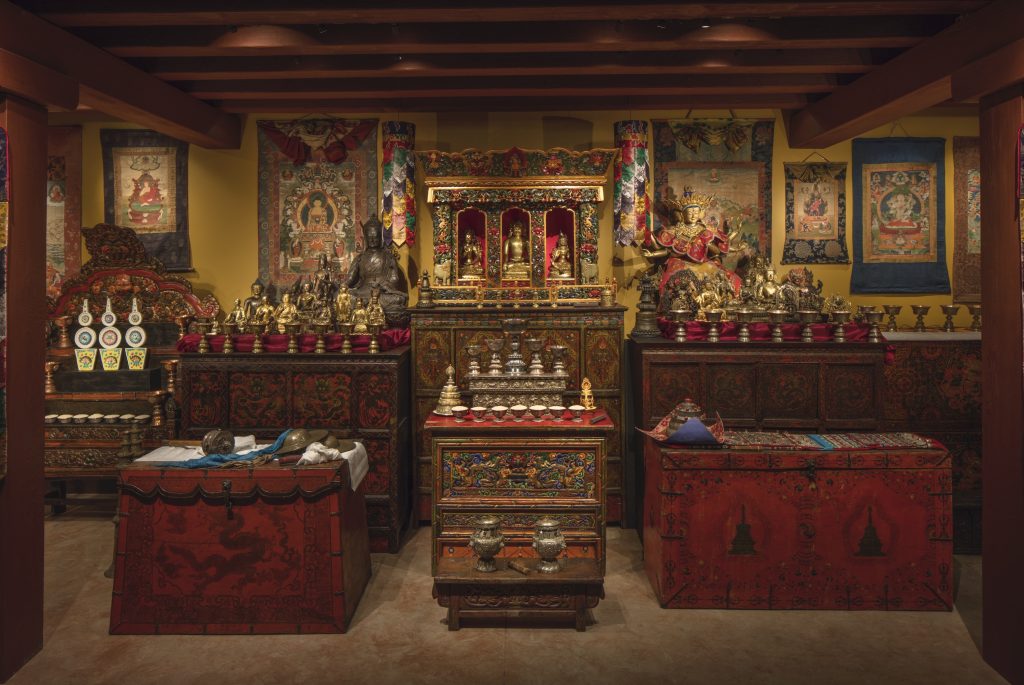
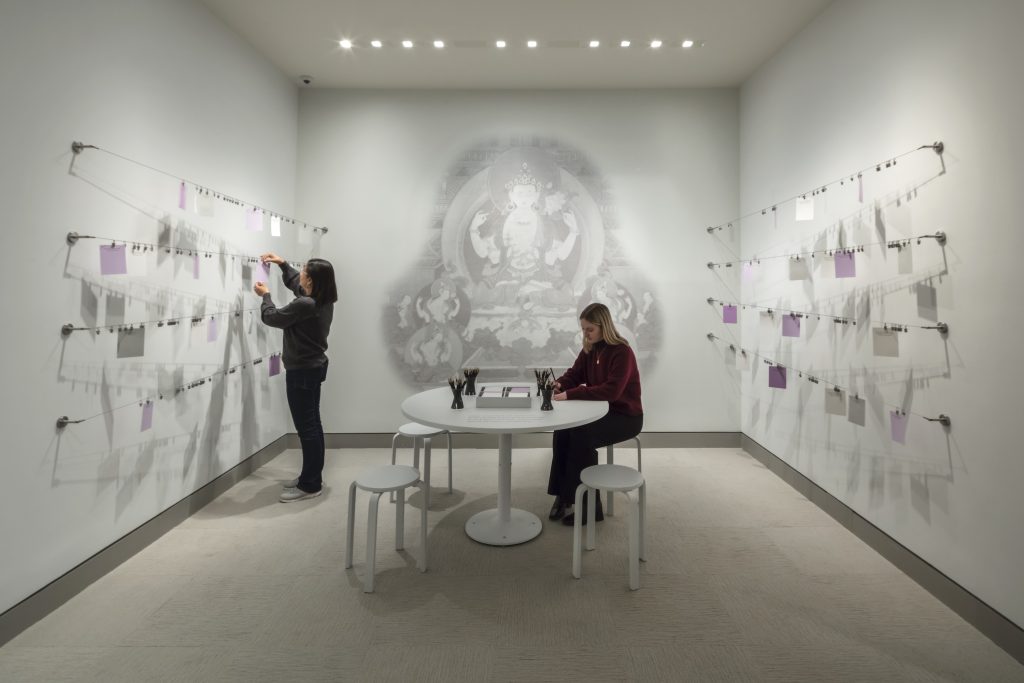
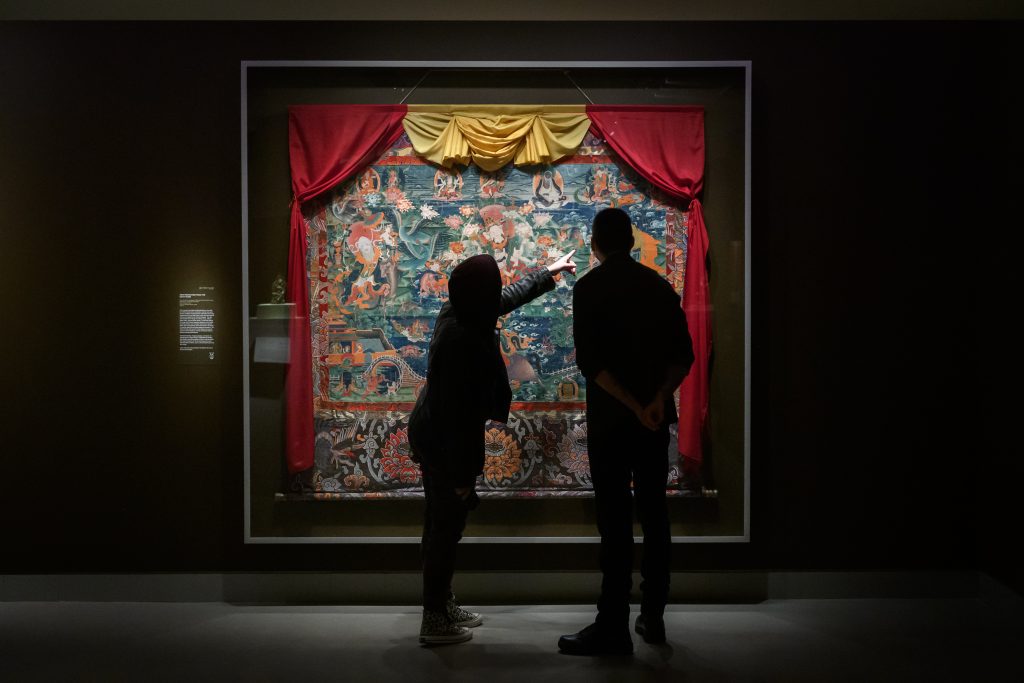
1 Comment